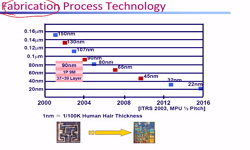In order to develop a new corrosion sensor for detecting and monitoring the corrosion of buried pipeline, the electrochemical property of sensors and the correlation of its output to corrosion rate of steel pipe, were evaluated by electrochemical meth...
http://chineseinput.net/에서 pinyin(병음)방식으로 중국어를 변환할 수 있습니다.
변환된 중국어를 복사하여 사용하시면 됩니다.
- 中文 을 입력하시려면 zhongwen을 입력하시고 space를누르시면됩니다.
- 北京 을 입력하시려면 beijing을 입력하시고 space를 누르시면 됩니다.
https://www.riss.kr/link?id=A45030278
- 저자
- 발행기관
- 학술지명
- 권호사항
-
발행연도
2005
-
작성언어
Korean
- 주제어
-
KDC
436
-
등재정보
KCI등재
-
자료형태
학술저널
- 발행기관 URL
-
수록면
306-317(12쪽)
- 제공처
- 소장기관
-
0
상세조회 -
0
다운로드
부가정보
다국어 초록 (Multilingual Abstract)
(Received February 1, 2005)
In order to develop a new corrosion sensor for detecting and monitoring the corrosion of buried pipeline, the electrochemical property of sensors and the correlation of its output to corrosion rate of steel pipe, were evaluated by electrochemical methods in synthetic groundwater, two soils of varying resistivity (5,000 ohm-cm, 10,000 ohm-cm), and synthetic tap water. In this paper, two types of electrochemical probes were used: galvanic cells containing of pipeline steel-copper and pipeline steel-stainless steel (Type 304). The results of EIS measurement indicated that the sensor current was inversely related to sensor resistance, which was governed by the corrosion behavior of cathode. In galvanic corrosion tests, the galvanic current of Cu-CS probe was higher than that of SS-CS probe. The comparison of the sensor output and corrosion rates revealed that a linear relationship was found between the probe current and the corrosion rates. A good linear quantitative relationship was found between the Cu-CS probe current and the corrosion rate of pipeline steel coupons in the soil resistivity of 5,000 ohm-cm, and synthetic tap water. In the case of the soil resistivity of 10,000 ohm-cm, although the SS-CS probe showed a better linear correlation than that of Cu-CS probe, the Cu-CS probe is more suitable than SS-CS probe, due to the high current output.
(Received February 1, 2005)
목차 (Table of Contents)
- Abstract
- 1. 서론
- 2. 실험방법
- 3. 결과 및 고찰
- 4. 결론
- Abstract
- 1. 서론
- 2. 실험방법
- 3. 결과 및 고찰
- 4. 결론
- 후기
- REFERENCES
동일학술지(권/호) 다른 논문
-
자동차용강의 고속변형거동에 대한 예비변형과 소부경화의 영향
- 대한금속재료학회
- 최일동
- 2005
- KCI등재
-
음의 기판 바이어스에 의한 탄탈 박막내의 주요불순물의 농도감소
- 대한금속재료학회
- 임재원
- 2005
- KCI등재
-
플라즈마 산화 처리된 65/35황동의 산소 분압별 부식특성에 관한 연구
- 대한금속재료학회
- 박창규
- 2005
- KCI등재
-
FC-25계 회주철의 이온질화처리에 따른 표면특성과 고온산화거동에 관한 연구
- 대한금속재료학회
- 허인창
- 2005
- KCI등재





 KISS
KISS







